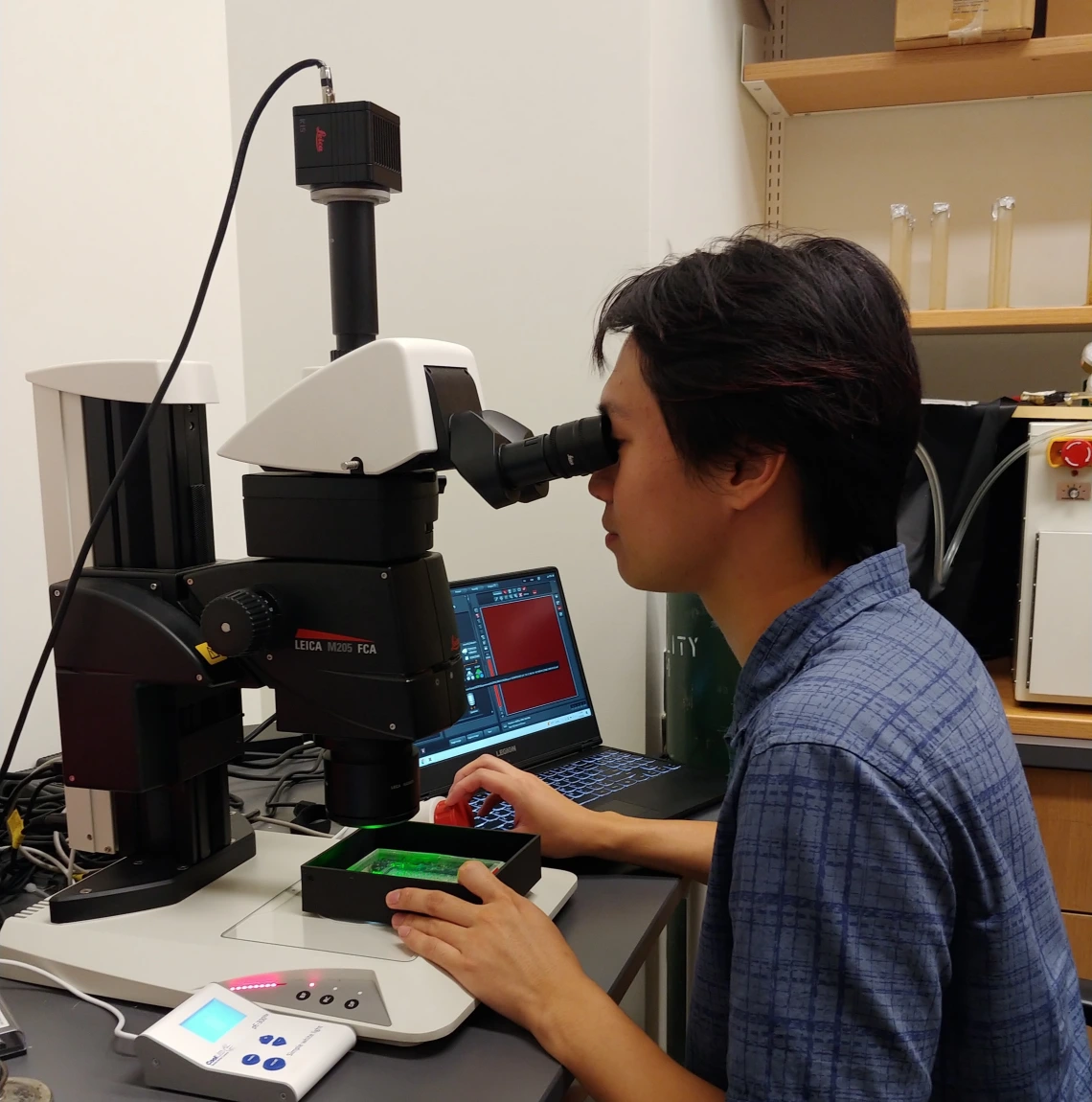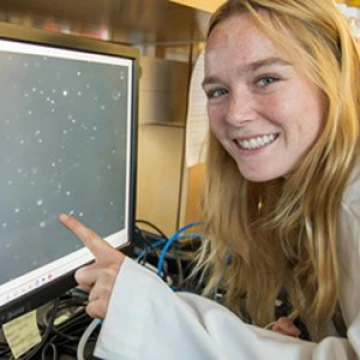UBRP's 2023-2024 Andrea Jeffers Wellington Fellows

Angelo Antenor, a 2023-24 Andrea Jeffers Wellington UBRP Fellow and a senior majoring in Molecular & Cellular Biology, explores immunity mechanisms in George Sutphin's laboratory.
The contributions of private donors, including those from alumni, mentors, parents, and other supporters, help support UBRP students’ paid research positions during the academic year, and we greatly acknowledge and appreciate their generosity! In honor of donors Doug and Andrea Wellington (alumna), we recognize Angelo Antenor and Remington Bliss as our Andrea Jeffers Wellington Fellows in UBRP for the 2023-24 academic year.
Angelo Antenor
Aging is a complex process marked by a series of interrelated biological changes that decrease the overall efficiency of our bodies to operate. As people grow older, one of the ways that the body tends to decline is the weakening of the immune system which increases susceptibility to life-threatening illness. As this tends to be a universal malady of age, it’s a cause for concern for anyone who makes it to a long-lived life. While modern medicine has done wonders in regards to antibiotic accessibility and sterility to minimize risks for the elderly, prolonging the efficacy of the immune system is an objective that is yet to be realized and risks of antibiotic resistant strains of bacteria are of increasing concern.
Trying to uncover some of the molecular bases of aging in Dr. George Sutphin’s lab, Angelo Antenor studies the role of the tryptophan metabolite, 3-hydroxyanthranilic acid (3HAA), which has been implicated to function in C. elegans immunity. Although its role has not yet been established as anything other than an intermediate product, the increased longevity and resistance to pathogenic infection in studies involving C. elegans shows a link to bolstering immunity through some mechanism. It’s been implied through the lab’s experiments that 3HAA may facilitate these healthier outcomes through opposing bacterial growth and could have potential as an antimicrobial with an alternative mechanism to circumvent more common antibiotic resistances. Characterizing the mechanism involved with these observed effects is one of the current objectives of the lab as a better understanding may allow for the development of a useful clinical intervention in the future.
Angelo Antenor is a senior majoring in molecular and cellular biology with minors in biochemistry and pharmaceutical sciences. Although already a part of Dr. Sutphin’s lab prior to UBRP, the summer experience was a major accelerant in his learning process and was an essential glimpse into the daily life of a researcher. Utilizing his experiences in the lab, he hopes
to pursue a PhD in the ABBS program at the University of Arizona in the following year. “I’m very thankful for the opportunity that UBRP and the people who’ve supported the program have granted me as the experiences I’ve had in the lab over the summer have been very pivotal in cultivating my interests and competency in research. Ultimately, it has led me to
pursue higher level education and I would not be where I am today if not for the support of UBRP and the wonderful people in Dr. Sutphin’s lab.”
Remington Bliss

In Dr. Brian McKay’s lab, Remington Bliss looks at extracellular vesicles with a nanoparticle tracker.
Age-Related Macular Degeneration (AMD) is the leading cause of vision loss and blindness in the American population over 65. Through analyzing data produced in clinical trials, Dr. Brian McKay found that taking L-DOPA can delay and prevent the onset of AMD. Currently, the treatment for AMD consists of eye injections given by a doctor every 4-6 weeks. For a two-year treatment, these shots can cost up to $9,000-$65,000. L-DOPA treatment is much less invasive and cost-effective. While it is known that L-DOPA has the potential to treat AMD, we must figure out why and how L-DOPA specifically works to prevent the onset of AMD. We know that an abundance of vesicles carrying unwanted material out of cells in the retina called extracellular vesicles (EVs) can cause AMD. We also know that L-DOPA greatly decreases the release of EVs from retina pigment epithelial (RPE) cells. What we need to find out is how L-DOPA decreases the presence of exosomes.
As a member of Dr. Brian McKay’s lab, Andrea Jeffers Wellington Fellow Remington Bliss is exploring the cell-specificity of EV release. Remington is particularly interested in choroidal melanocytes and their EV release patterns in the absence and presence of L-DOPA. While in Dr. McKay’s lab, Remington hopes to explore yet another cell signaling pathway that must be further investigated as it may offer greater insight into the mechanisms of AMD and its risk factors.
Remington is a fourth year student majoring in Physiology & Medical Sciences with minors in Nutritional Sciences and Molecular & Cellular Biology. She is an aspiring Ophthalmologist with a goal to create more efficient and effective ways to help her future patients. Remington’s participation in UBRP has played a core role in developing her aspirations to pursue ophthalmology. “I am beyond grateful to be working on such an exciting project. UBRP has not only provided me with the opportunity to meet an inspiring life-long mentor, Dr. McKay, but has also supported me throughout my journey of experiencing hands-on research where I am lucky enough to help prevent the onset and severity of a widespread disease.”




